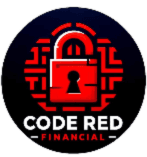
How to Spot & Avoid Online Scams
“If you have a mobile phone and an email address, you’ve likely encountered it: the unsolicited text message urging you to click a link to track a package, or demanding toll payments for places you’ve never visited. Perhaps it was a convincing-looking email in your inbox, seemingly from a company you trust, or a text claiming an urgent issue with your bank account. Increasingly common are phone calls from individuals posing as government agents demanding immediate action, or messages from strangers on social media offering friendship or unbelievable opportunities. These are all common forms of phishing and scams.”
Financial scams and fraud are not abstract concepts or things that only happen to “other people.” They are a pervasive, constantly evolving threat in our modern world, a digital (and sometimes physical) minefield that we all navigate daily. They strike at people of all ages, income levels, and backgrounds, often during moments of vulnerability or when we’re simply not expecting an attack.
For me, the reality of scams isn’t just something I read about; it’s something I’ve had close calls with, something friends and family have unfortunately fallen victim to, and something I remain constantly vigilant about in my own financial life. Sharing personal experiences alongside the cold, hard data on scam trends and types, and outlining proven prevention strategies, feels not just important, but necessary. My goal is to empower you with the knowledge to spot the red flags and build robust defenses.
My Brush with Scams: A Moment of Vulnerability
I remember one particular incident a few years ago that served as a stark wake-up call. It wasn’t a massive financial loss, but it was a vivid illustration of how easily one can be targeted and how sophisticated scammers have become.
I received a text message, seemingly from my bank. It warned of suspicious activity on my account and provided a link to “verify my identity immediately.” My bank does send fraud alerts via text sometimes, so my initial reaction wasn’t outright skepticism. I was busy, slightly distracted, and the urgency of the message felt real.
Just as my thumb hovered over the link, something felt off. The grammar wasn’t perfect, and while the sender ID looked somewhat familiar, it wasn’t the exact shortcode my bank usually uses. I paused. Instead of clicking, I closed the message and opened my bank’s official app directly on my phone (the one I use regularly and downloaded from the official app store). There were no alerts about suspicious activity.
I then called the bank using the customer service number listed on the back of my physical card, not a number from the text. They confirmed they had sent no such message, and the text was a phishing attempt designed to steal my login credentials if I had clicked the link and entered them on a fake site.
The feeling afterwards was a mixture of relief and a chilling realization: I almost fell for it. Even with a reasonable awareness of online security, in a moment of distraction and urgency, I was vulnerable. This close call reinforced my commitment to vigilance and to understanding the scammer’s tactics. It hammered home the fact that staying safe isn’t just about being generally cautious; it requires specific knowledge and consistent habits.
The Data Doesn’t Lie: The Alarming Scale of Financial Scams
My personal near-miss pales in comparison to the staggering losses reported by consumers every year. Objective data from sources like the U.S. Federal Trade Commission (FTC) and the FBI’s Internet Crime Complaint Center (IC3) paint a sobering picture of the scam epidemic.
According to the FTC’s data, consumers reported losing billions of dollars to fraud annually. For instance, reports from recent years consistently show losses well into the billions, with millions of reports filed. While the exact figures for early 2025 are still being compiled and analyzed, the trend over the past few years has been clear: scam attempts are increasing, they are becoming more sophisticated, and the total reported losses continue to climb.
The FBI’s IC3 annual reports provide further detail, highlighting the types of internet-based fraud that cause the most harm. Investment scams and business compromise scams often lead to the highest reported losses, while phishing and personal data breaches affect vast numbers of people, often serving as the initial step in other fraudulent activities.
This data isn’t just statistics; it represents real people losing their savings, their retirement funds, suffering emotional distress, and facing long battles to recover their financial stability and identity. It affects people across the demographic spectrum, though scammers often target specific age groups with tailored tactics – seniors might be more vulnerable to government imposter scams, while younger adults might lose money to online shopping scams or investment fraud promoted on social media. Data shows that wire transfers, cryptocurrency, and gift cards are frequently demanded payment methods by scammers, precisely because they are difficult to trace and recover.
The crucial takeaway from this objective data is that this is a massive problem, affecting countless lives. Staying informed and proactive isn’t being paranoid; it’s being realistic and responsible in today’s digital landscape.

Understanding the Predator’s Playbook: Common Scam Tactics & Types
Scammers are, in essence, con artists. They use psychology and deception to trick you into giving them money or sensitive information. While the specific scenarios change, the underlying tactics are often the same. Understanding these common “playbooks” is key to spotting a scam.
Here are some of the most prevalent types of financial scams I see reported in the data and encounter in discussions:
- Imposter Scams: This is consistently one of the costliest scam types. The scammer pretends to be someone you trust or someone with authority.
- Government Imposters: They might claim to be from the IRS, Social Security Administration, or a law enforcement agency, demanding immediate payment for supposed back taxes or claiming your Social Security number has been suspended. Data shows these scammers often create urgency and use threats.
- Business Imposters: They might pose as representatives from major companies like Amazon, Apple, Microsoft, or your bank, claiming there’s a problem with an order, account, or computer. My text scam was this type. They often try to get you to reveal login credentials or purchase gift cards to “fix” the issue.
- Relationship Scams: This includes Romance Scams (building fake romantic relationships online to solicit money) and Family Emergency Scams (claiming a grandchild or relative is in trouble and needs money urgently). These play heavily on emotions and can be devastatingly effective. Data highlights significant individual losses in these scams.
- Online Shopping Scams: You see an amazing deal on social media or a website. You pay, but the goods never arrive, are counterfeit, or are completely different from what was advertised. This leverages the convenience of online shopping against you. Data shows social media ads are a common starting point for these scams.
- Investment Scams: These promise high, often guaranteed, returns with little to no risk. This includes fake cryptocurrency investment platforms (a major area of reported loss recently according to IC3 data), Ponzi schemes, or fake opportunities in forex or commodities. Scammers often pressure you to invest quickly and heavily.
- Phishing, Smishing, and Vishing: These are methods used to obtain your information or credentials, often as a gateway to other scams.
- Phishing: Fraudulent emails designed to look legitimate, asking you to click a link or download an attachment. They aim to steal login details, credit card numbers, or install malware. (Like my near-miss text, but via email).
- Smishing: Phishing via SMS text message. (Exactly my near-miss).
- Vishing: Phishing via phone call (Voice Phishing). Scammers might use spoofing to make the caller ID look like a legitimate company or local number.
- Tech Support Scams: You receive an unsolicited call or a pop-up warning on your computer claiming you have a virus. The “technician” (scammer) wants remote access to your computer or demands payment to fix a non-existent problem.
- Job Scams: Fake job offers requiring you to pay for training, equipment, or background checks upfront, or asking for your bank account details for direct deposit before you’ve even started working.
- Lottery/Prize Scams: You’re told you’ve won a large sum of money or a prize, but you need to pay taxes, fees, or processing costs upfront to receive it. Real lotteries don’t require payment to claim winnings.
The common thread? They all leverage psychological triggers: urgency (“Act now or else!”), fear (“You’ll be arrested!”, “Your account will be closed!”), greed (“Guaranteed high returns!”, “Free prize!”), empathy (“Your grandchild needs help!”), or authority (“I’m from the IRS/FBI/Microsoft!”). Scammers are masters of social engineering, manipulating human emotions and trust.
How to Spot a Scam: Red Flags to Watch For
Learning the common scam types helps, but recognizing the patterns of deception is even more powerful. Here are key red flags that instantly trigger my skepticism:
- Unsolicited Contact: Did they contact you out of the blue via phone, text, email, or social media? Be immediately suspicious. Legitimate businesses or agencies usually don’t initiate contact this way for urgent issues or demand immediate action without prior communication.
- Urgency or Pressure: Scammers hate giving you time to think or verify. They will pressure you to act immediately – transfer money now, provide information now, click this link now. Any demand for immediate action without allowing you to verify independently is a massive red flag.
- Unusual Payment Methods: Being asked to pay with gift cards (iTunes, Google Play, etc.), wire transfers (especially overseas), cryptocurrency, or payment apps like Zelle, Cash App, or Venmo for things like taxes, fees, or to “fix” a problem. These methods are difficult or impossible to trace and recover once sent. Legitimate entities rarely demand payment this way for official purposes.
- Requests for Personal Information via Insecure Channels: Asking for your Social Security number, bank account details, credit card number, or passwords via email, text, or phone (unless you initiated the secure call to a known number). Never provide sensitive information in response to unsolicited requests.
- Too-Good-To-Be-True Offers: Promises of guaranteed high investment returns, winning a lottery you didn’t enter, or deals that are drastically better than market rates. If it sounds too good to be true, it almost certainly is.
- Poor Grammar, Spelling, or Odd Phrasing: While some sophisticated scams are well-written, many still contain errors that legitimate organizations wouldn’t make. This is a simple but effective filter.
- Demands for Secrecy: Being told not to tell anyone about this offer or situation is a classic scammer tactic to isolate you from advice or help.
- Threats: Threats of legal action, arrest, account closure, or other negative consequences if you don’t comply immediately. Legitimate organizations follow legal processes; they don’t make instant threats demanding immediate payment via gift card.
- Being Asked to Pay Upfront: Paying a fee to get a loan, a job, a prize, or an inheritance is often a scam.
- Spoofing: The caller ID or email address looks almost right, mimicking a legitimate contact. Scammers can easily fake this information. Always verify independently.
These red flags are your first line of defense. They are the data points you collect in real-time during an interaction that signal danger.

Proactive Fraud Prevention: Building Your Defenses
Spotting a scam is one thing; preventing them from succeeding or even reaching you requires proactive measures. Building good digital hygiene and healthy skepticism is crucial. Here’s what I do and what I recommend:
- Strengthen Passwords and Use Two-Factor Authentication (2FA): Use unique, strong passwords for important accounts (banking, email, social media). Use a password manager if needed. Enable 2FA wherever possible (using an authenticator app is generally more secure than SMS). This makes it much harder for scammers to access your accounts even if they get your password.
- Be Skeptical of Unsolicited Contact: Verify Independently: This is perhaps the most critical habit. If someone contacts you unexpectedly claiming to be from a company or agency, do not trust the contact information they provide. Hang up, delete the email/text, and contact the organization directly using a phone number or website you know is legitimate (e.g., from their official website you navigate to, or the back of your card). My near-miss taught me this lesson vividly.
- Secure Your Devices: Keep your computer, phone, and other devices updated with the latest software and security patches. Use reputable antivirus and anti-malware software. Scammers exploit vulnerabilities in outdated systems.
- Be Cautious on Social Media: Limit the amount of personal information you share publicly. Be wary of clicking links from unknown sources or engaging with unsolicited messages, especially those offering quick money or asking for personal details. Scammers mine social media for information to make their approaches seem more legitimate.
- Regularly Review Bank and Credit Card Statements: Check your statements every month (or more frequently online) for any transactions you don’t recognize. Report unauthorized charges to your bank or card issuer immediately. Data shows that timely reporting increases the chance of recovering lost funds.
- Check Your Credit Report: Get your free annual credit reports from AnnualCreditReport.com. Review them for any accounts or activity you don’t recognize – a sign of potential identity theft.
- Shred Sensitive Documents: Don’t just throw away documents containing personal information (account numbers, SSN, etc.). Shred them before disposal.
- Be Careful with Public Wi-Fi: Avoid conducting sensitive transactions (online banking, shopping) when connected to unsecured public Wi-Fi networks.
- Understand Privacy Settings: Be aware of the privacy settings on your social media accounts, email, and other online services. Limit who can see your personal information.
- Consider a Credit Freeze: If you are particularly concerned about identity theft, you can place a security freeze on your credit reports with the major credit bureaus. This prevents new credit accounts from being opened in your name.
What To Do If You Spot or Fall for a Scam:
Even with the best prevention, you might still be targeted or even fall victim. Knowing the immediate steps to take is crucial:
- Stop All Contact: Immediately cease communication with the scammer.
- Do NOT Send More Money or Information: Do not comply with any further requests.
- Act Fast if Money Was Sent: If you sent money via wire transfer, gift card, or payment app, contact the financial institution or company immediately. Explain it was a fraudulent transaction. Recovery is difficult but speed is essential. If you paid by credit card, you have strong fraud protection; report the charge to your card issuer.
- Report to the FTC: File a report with the Federal Trade Commission at ftc.gov/complaint. This data helps law enforcement track scams and potentially take action.
- Report to the FBI IC3: For internet-based scams, file a report with the FBI’s Internet Crime Complaint Center at ic3.gov. This is vital for collecting data and pursuing cybercriminals.
- Notify Affected Financial Institutions: Contact your bank, credit card companies, and any other accounts that may have been compromised or used in the scam.
- Change Passwords: If you suspect an account was compromised, change your password immediately. Use a strong, unique password.
- Consider a Credit Freeze: If you believe your personal information (like SSN) was compromised, place a security freeze on your credit reports with Equifax, Experian, and TransUnion.
Pertinent Information: The Evolving Threat and Emotional Toll
It’s important to remember that scammers adapt. The rise of AI technology means we might see more sophisticated deepfake audio or video being used in imposter scams in the future. Staying informed about current scam trends by checking reputable sources like the FTC website is part of ongoing prevention.
Finally, the emotional toll of being scammed is significant. Victims often feel shame, embarrassment, anger, and violation. If you or someone you know has been scammed, remember that it is not your fault. Scammers are professional manipulators. Seeking support and reporting the incident are crucial steps for recovery and prevention for others. Talking openly about scams helps reduce the stigma and raises awareness.
Wrap-up
Financial scams are a persistent and evolving threat in our interconnected world. The objective data clearly shows their scale and impact, while personal experiences highlight how easily any one of us can be targeted. There is no foolproof shield, but vigilance, skepticism, and proactive prevention measures are our strongest defenses.
This by no means is the entirety of the scammer’s playbooks, but by recognizing the red flags and consistently applying good digital hygiene, we can significantly reduce our exposure. It requires awareness and discipline, but the protection of our financial security and peace of mind is well worth it.
Knowing all this, how are you planning to strengthen your defenses against financial scams and fraud starting today?
Disclaimer: This article is written from a personal perspective and reflects the author’s opinions and experiences. It includes general information about financial scams and fraud prevention based on publicly available data from sources like the FTC and FBI IC3. It is not legal or financial advice, and specific actions regarding scams or fraud should be discussed with appropriate authorities and financial institutions. Readers should consult official government websites for the most current data and reporting procedures.







